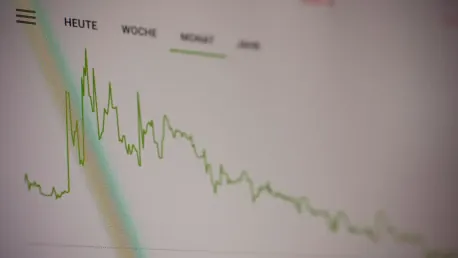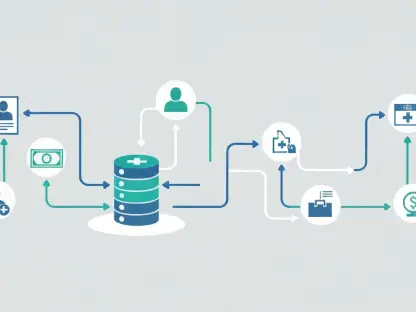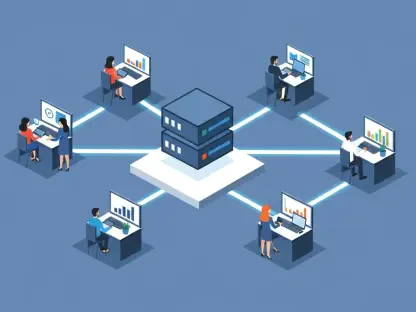Predictive analytics, a powerful tool leveraging data, statistical algorithms, and machine learning techniques, is revolutionizing the way businesses forecast outcomes and make critical decisions. By examining historical data, enterprises are now empowered to make informed choices that improve efficiency, mitigate risks, and deliver personalized experiences to their customers.
Understanding the Basics
The Role of Data
Predictive analytics fundamentally depends on various types of data to generate reliable forecasts. Structured data, such as customer records and sales figures, is highly organized and easily searchable, often stored in databases and spreadsheets. This data’s neat arrangement allows straightforward analysis using traditional methods. In contrast, unstructured data, including social media posts, images, and audio files, does not fit neatly into rows and columns, necessitating advanced techniques like natural language processing and image recognition for effective analysis. A blend between the two, semi-structured data encompasses information that has some level of organization but does not follow the rigid structure of conventional databases, making it somewhat easier to manage than unstructured data while still providing rich insights.
Sources of Information
Businesses accumulate data from both internal and external sources to build a comprehensive picture necessary for predictive analytics. Internal data sources include customer purchase histories, transaction records, and employee information, all readily available within the organization and highly relevant for internal analysis. External data sources, on the other hand, provide a broader context and help businesses understand market trends, consumer behavior, and economic conditions. These sources include social media platforms, market research reports, industry benchmarks, and economic indicators. Integrating these diverse data sources allows businesses to gain deep insights and develop a holistic view, leading to more accurate predictions and strategic decisions.
Tools and Technologies
Key Analytical Tools
Modern predictive analytics involves employing a variety of tools and technologies that facilitate the analysis of vast amounts of data and generate actionable predictions. Machine learning algorithms are at the core of these tools, capable of learning from historical data patterns to make future predictions. Data mining techniques uncover hidden patterns and associations within large datasets, while statistical models apply mathematical frameworks to interpret and predict data trends. These tools collectively enhance the ability to process and evaluate data, leading to reliable and actionable insights that drive business strategies.
Popular Platforms and Programming
Several platforms and programming languages are pivotal in implementing predictive analytics effectively. Platforms such as SAS, IBM Watson, Google Cloud AI, and Microsoft Azure ML offer powerful capabilities for analyzing large datasets and creating sophisticated predictive models. These platforms provide the computational power and robust frameworks needed to handle complex data analysis. Moreover, programming languages like Python and R have become integral to predictive analytics, thanks to their versatility and extensive libraries like TensorFlow and Scikit-learn. These libraries offer flexible, cost-effective solutions for model building, enabling businesses to customize their analytical approaches to align with specific needs and objectives.
Predictive Models
Classification and Regression Models
Classification models are designed to categorize data into distinct classes and predict group membership based on the analysis. Decision trees, for instance, utilize yes/no questions to partition data into smaller and more manageable subsets, enhancing prediction accuracy. Random Forest models combine multiple decision trees to improve reliability, while Support Vector Machines (SVM) seek the optimal boundary to separate data groups. Neural networks, characterized by their interconnected nodes across layers, excel in performing complex classifications and predictions. Regression models, however, focus on predicting continuous values and evaluating the likelihood of certain events. Linear regression assesses the relationship between variables to predict continuous outcomes, whereas logistic regression categorizes data into two groups and estimates probabilities of occurrence. Ridge regression, similar to linear regression, includes steps to prevent overfitting, ensuring the model remains robust when applied to new data.
Advanced Time-Series and Clustering Models
Time-series models, integral to predictive analytics, excel at forecasting future trends by analyzing historical data patterns. ARIMA (AutoRegressive Integrated Moving Average) models, for example, predict future values by examining past data sequences, while Exponential Smoothing emphasizes recent data to forecast trends dynamically. LSTM (Long Short-Term Memory) networks, a type of neural network, are particularly adept at predicting sequences and trends over extended periods. Clustering models like K-Means explore patterns within the data by dividing it into predefined clusters based on similarities, revealing deeper insights into relationships within datasets. Hierarchical clustering builds a tree-like structure, outlining data relationships, while DBSCAN (Density-Based Spatial Clustering of Applications with Noise) groups data based on density, making it especially useful for handling noisy and outlier-infested data.
Applications in Business
Enhancing Marketing Strategies
Predictive analytics has revolutionized marketing by enabling businesses to deploy targeted advertising and accurately forecast buyer behavior. By analyzing diverse data sources, marketers can identify potential leads and tailor campaigns to meet specific consumer needs, optimizing reach and engagement effectively. Personalized marketing strategies, made possible through predictive models, help businesses engage customers at the right time with the right message, enhancing conversion rates substantially. Additionally, predictive analytics allows companies to anticipate market trends and adjust their marketing tactics accordingly, staying ahead of competitors and maximizing return on investment.
Streamlining Operations and Reducing Risks
In operational contexts, predictive analytics plays a critical role in optimizing processes and minimizing risks. Predictive models can anticipate machine failures, allowing for timely maintenance and reducing downtime. Inventory management benefits significantly from predictive analytics, as it aids in forecasting demand accurately, ensuring stock levels are optimized and reducing holding costs. Shipping costs can be minimized by predicting and planning for logistical needs effectively. In risk management, predictive analytics is indispensable, identifying irregular patterns that could signify fraud or operational risks. By detecting these anomalies early, businesses can implement corrective measures and avoid significant losses, ensuring compliance with regulatory standards and safeguarding their operations.
Challenges and Ethical Considerations
Data Quality and Model Accuracy
The efficacy of predictive analytics is heavily dependent on the quality of data used for analysis. Poor or incomplete data can lead to inaccurate predictions, undermining the reliability of the models. Overfitting, where models perform exceptionally well on training data but fail in real-world scenarios, is another challenge, akin to memorizing test answers without understanding. Ensuring data quality through rigorous validation and cleansing processes is crucial for maintaining the accuracy and effectiveness of predictive models. Businesses must implement best practices in data management, including regular audits and verification, to sustain high standards in predictive analytics.
Ethical Issues and Privacy Concerns
Ethical concerns surrounding predictive analytics primarily revolve around bias in models and privacy risks associated with handling personal data. Biases in data can lead to unfair or harmful predictions, particularly in sensitive areas like hiring or law enforcement. It is imperative for businesses to adopt techniques that mitigate bias and ensure fairness in their models. Privacy risks are equally significant, with regulations like GDPR necessitating responsible management of personal data to protect individual privacy. Compliance with data protection laws and ethical handling of information is critical, ensuring that predictive analytics serves the best interests of both businesses and consumers without compromising ethical standards.
Turning Insights into Action
Expert Knowledge and Training
Harnessing the full potential of predictive analytics requires skilled professionals who can navigate its complexities. Proper education and training in data analysis are foundational, equipping individuals with essential skills to handle and apply data analytically. Programs like Syracuse University’s Applied Data Analytics Bachelor’s Degree prepare professionals with a comprehensive understanding of predictive analytics, enabling them to manage critical aspects of data analysis proficiently. Businesses must invest in upskilling their workforce, ensuring they have the expertise to leverage predictive analytics effectively and drive value from their data-driven insights.
Implementing Predictive Insights
Predictive analytics, an advanced tool that uses data, statistical algorithms, and machine learning techniques, is profoundly transforming the way businesses forecast outcomes and make crucial decisions. By delving into historical data, companies can now make well-informed decisions that enhance efficiency, reduce risks, and provide tailored experiences for their customers.
This analytical approach allows businesses to interpret patterns, trends, and customer behaviors. For instance, retailers can utilize predictive models to anticipate demand for products and manage inventory more effectively, while financial institutions can foresee potential fraud and address it proactively. Furthermore, predictive analytics aids in refining marketing strategies by identifying target audiences and predicting their response to various campaigns.
Additionally, healthcare providers are leveraging predictive analytics to predict patient outcomes, optimize treatment plans, and improve overall care quality. In manufacturing, it assists in predicting equipment failures, thereby minimizing downtime and maintenance costs.
Ultimately, predictive analytics equips organizations with the foresight needed to make agile decisions in an ever-evolving marketplace. As data continues to grow exponentially, the capability to analyze and predict outcomes will become increasingly vital. Embracing predictive analytics is not merely a competitive advantage but a necessary evolution for businesses aiming to thrive in the modern landscape.









